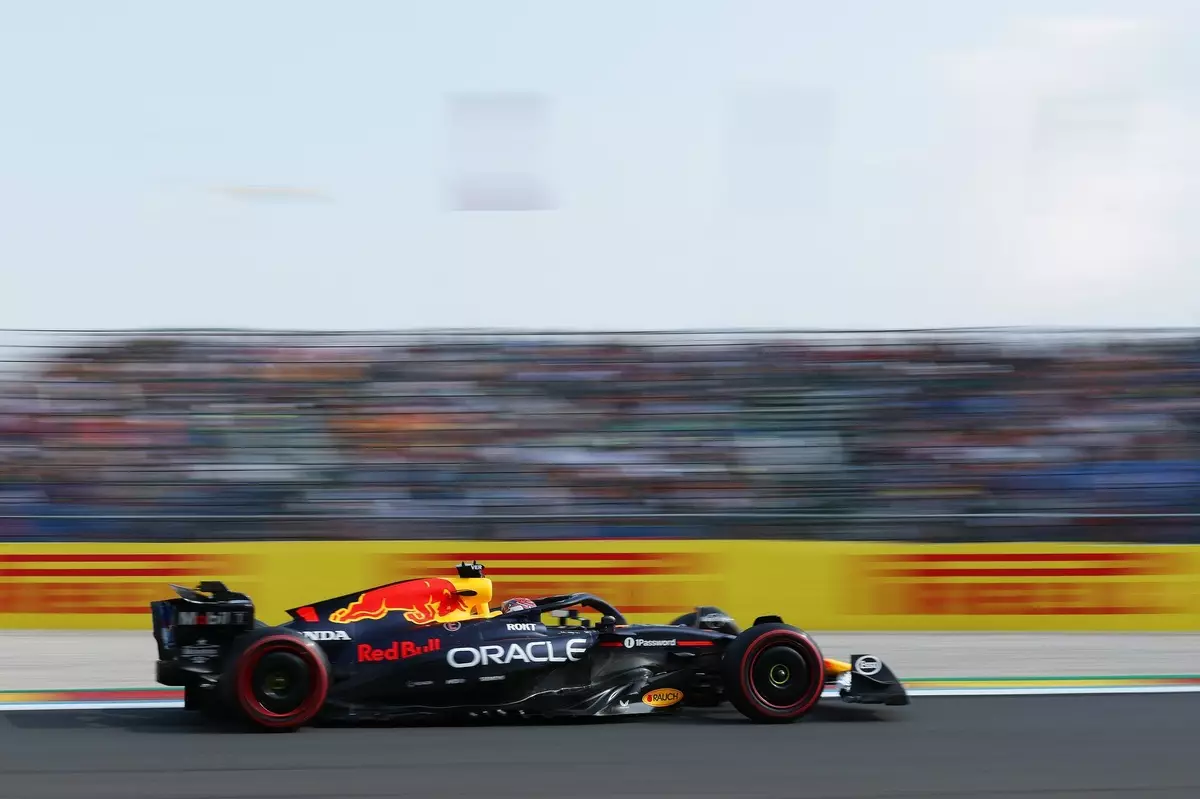In the fast-paced world of Formula 1, qualifying sessions are a test of both technical mastery and mental resilience. Recently, Max Verstappen found himself faltering just short of the front-runners, a stark reminder that even the most dominant drivers can be vulnerable. Despite a car that boasts formidable downforce and cutting-edge modifications, Verstappen’s inability to challenge Oscar Piastri underscores a broader issue: the relentless pursuit of perfection in an ever-evolving sport. His slip in the second sector, losing nearly four-tenths of a second, was not merely a minor glitch but a glaring indicator of how marginal gains and losses can determine fate on race day.
This situation reveals that in Formula 1, engineering that boosts one aspect—such as downforce—often comes at the expense of another—like straight-line speed. Verstappen’s team strived to strike a delicate balance, but in doing so, they inadvertently ceded crucial tenths to their rivals. Despite receiving updates perceived as an “improvement,” the gap to Piastri and McLaren’s blistering pace remained stubbornly persistent. It’s a harsh lesson in how incremental advances, though seemingly significant, can still fall short against a rival executing flawlessly.
The Unseen Power of Driver Precision and Strategy
While technical upgrades are vital, the driver’s execution remains arguably the decisive element. Piastri’s narrow scrapes into the final qualifying segments speak volumes about his ability to extract maximum performance from his machinery. It’s not solely about raw speed but about the timing, the braking points, and the mastery over track limits. McLaren’s entire team demonstrated that a well-drilled driver can compensate for, or even surpass, the limitations of their car with precision driving.
In contrast, Verstappen’s comments—initially dismissive of the importance of straight-line speed—highlight a subtle overconfidence that can sometimes undermine actual performance. His assertion that being nearly half a second adrift makes pace adjustments irrelevant hints at a philosophical stance, but it also smacks of complacency. The reality is that every tenth counts, especially in the context of high-stakes qualifying. The gap in lap times exposes a broader truth: that speed isn’t just about horsepower or aerodynamic grip; it’s about the holistic integration of all facets of driving and setup.
The Evolution of F1: A Constant Race for Margins
Tsunoda’s continuing struggles and the strategic decisions behind vehicle upgrades further complicate the picture. His consistent inability to reach the final phase of qualifying, combined with the fact that he’s not running the same upgrades as Verstappen, underscores how competitive advantage in F1 often hinges on subtle legality and resource discrepancies. Marko’s skepticism about Tsunoda’s chances of gaining points in the sprint race reflects a harsh reality: without improvements, drivers can find themselves perpetually in a catch-up mode.
This evolution of the sport emphasizes that success is rarely a matter of raw car speed alone. It involves meticulous fine-tuning, driver development, and strategic foresight. Verstappen’s team’s acknowledgment that their gains are “not enough” elucidates a brutal truth: the margin between victory and defeat is razor-thin, and pushing that boundary requires relentless innovation and precision. Piastri’s emerging dominance in qualifying, despite his relatively inexperienced status, signifies a shift—one where the youngest and most adaptable drivers can capitalize on every misstep, every fraction of a second lost.
The Psychology Behind the Push and the Price of Perfection
Underlying all these technical and strategic considerations is a mental game of high intensity. Verstappen’s measured responses after qualifying reveal the heavy burden that comes with being the sport’s top driver. Accepting a second-place grid position, even when the car is competitive, requires mental resilience to avoid frustration and complacency.
The focus on sector times and top speeds demonstrates that drivers are constantly analyzing and recalibrating, trying to squeeze every ounce of performance. Yet, Verstappen’s acknowledgment that “going faster on the straight isn’t going to matter much” reflects a mindset focused on rectifying core issues rather than superficial speed gains. That mindset, while pragmatic, can also be a double-edged sword; any hint of overconfidence might hinder the willingness to adapt or attempt unconventional strategies.
In a realm where perfection is the benchmark, even small lapses or missed setups can ripple into missed opportunities. The ongoing tension between technical limitations, driver execution, and race strategy defines the evolving narrative of Formula 1—where every turn, every sector, and every decision quietly shape the destiny of the race.

